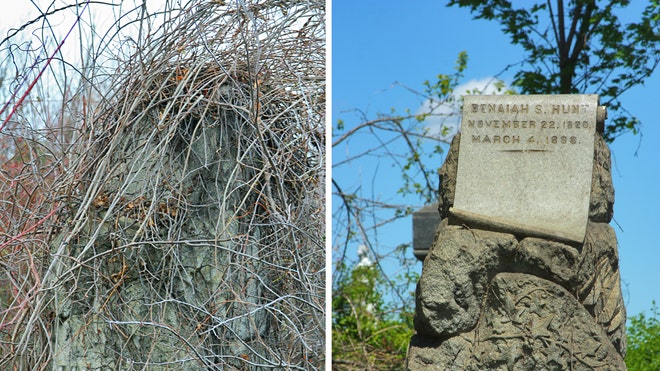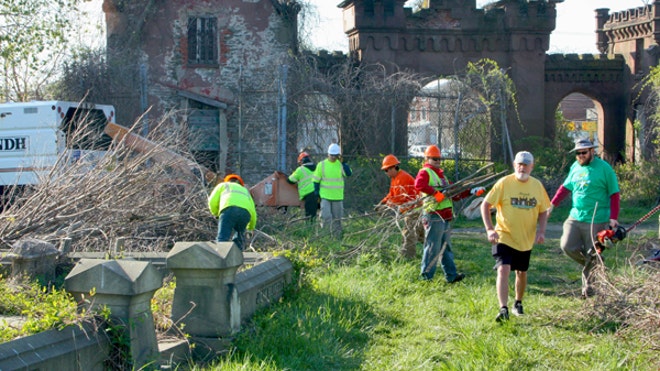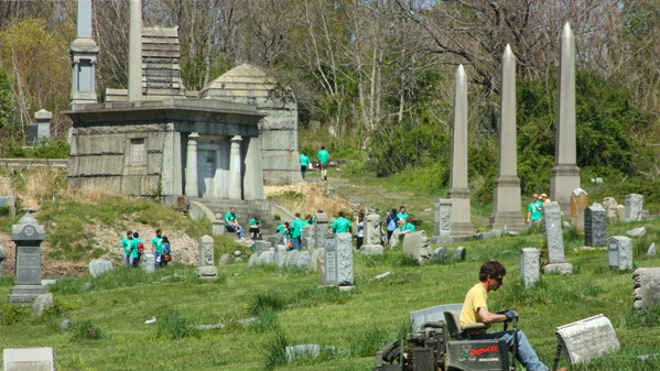Posted: Sunday, September 29, 2013 12:00 am | Updated: 9:40 am, Sun Sep 29, 2013.
A large and contentious Confederate battle flag raised Saturday next to Interstate 95 near Chester is largely obscured by trees bordering the highway.
The Virginia Flaggers, a Confederate heritage group, hoisted the 15-foot-square banner on a 50-foot pole adjacent to I-95 in Chesterfield County.
“Richmond needed a reminder of her Confederate heritage,” the group’s Susan Hathaway said.
More than 200 people — more than 30 carrying Confederate flags themselves — gathered for the flag-raising ceremony on the roughly cleared site just south of Old Bermuda Hundred Road.
A counter group called UnitedRVA purchased a large American flag that was raised Saturday at a construction site next to City Hall in downtown Richmond.
The American flag is hanging from a construction crane on the north side of East Broad Street, between North 10th and North 11th streets.
Interstate 95 is the most heavily traveled highway on the U.S. East Coast, but tall trees along the road’s shoulder make the flag difficult to see for northbound traffic and, with the Old Bermuda Hundred overpass, nearly impossible for southbound.
The Confederate battle flag is one of America’s most controversial symbols, carrying meanings of honor and sacrifice to some people, but of slavery and racism to others.
Raising the large red-white-and-blue flag along the road has prompted letters to editors, official comments and Internet petition drives, collecting thousands of supporters pro and con.
Richmond was the capital of the Confederate States of America during the Civil War.
The Virginia Flaggers have demonstrated outside the Virginia Museum of Fine Arts and the Museum of the Confederacy, saying that neither institution gives proper respect to the Southern flag.
Saturday’s ceremony included the singing of “Dixie” and “Carry Me Back to Old Virginny,” the playing of “Amazing Grace” and “The Bonnie Blue Flag” on bagpipes, and the firing of a three-volley musket salute.
http://www.timesdispatch.com/news/local/chesterfield/confederate-battle-flag-rises-in-chesterfield-off-i/article_17bc857c-285e-11e3-8490-001a4bcf6878.html
Note: Contrary to typical perception that there is only one "American" flag - all Confederate Flags are American Flags. They are the flags of the Confederate States of America. The "American" flag mentioned in the article is the flag of the United States - also an American flag.
The Virginia Flaggers, a Confederate heritage group, hoisted the 15-foot-square banner on a 50-foot pole adjacent to I-95 in Chesterfield County.
“Richmond needed a reminder of her Confederate heritage,” the group’s Susan Hathaway said.
More than 200 people — more than 30 carrying Confederate flags themselves — gathered for the flag-raising ceremony on the roughly cleared site just south of Old Bermuda Hundred Road.
A counter group called UnitedRVA purchased a large American flag that was raised Saturday at a construction site next to City Hall in downtown Richmond.
The American flag is hanging from a construction crane on the north side of East Broad Street, between North 10th and North 11th streets.
Interstate 95 is the most heavily traveled highway on the U.S. East Coast, but tall trees along the road’s shoulder make the flag difficult to see for northbound traffic and, with the Old Bermuda Hundred overpass, nearly impossible for southbound.
The Confederate battle flag is one of America’s most controversial symbols, carrying meanings of honor and sacrifice to some people, but of slavery and racism to others.
Raising the large red-white-and-blue flag along the road has prompted letters to editors, official comments and Internet petition drives, collecting thousands of supporters pro and con.
Richmond was the capital of the Confederate States of America during the Civil War.
The Virginia Flaggers have demonstrated outside the Virginia Museum of Fine Arts and the Museum of the Confederacy, saying that neither institution gives proper respect to the Southern flag.
Saturday’s ceremony included the singing of “Dixie” and “Carry Me Back to Old Virginny,” the playing of “Amazing Grace” and “The Bonnie Blue Flag” on bagpipes, and the firing of a three-volley musket salute.
http://www.timesdispatch.com/news/local/chesterfield/confederate-battle-flag-rises-in-chesterfield-off-i/article_17bc857c-285e-11e3-8490-001a4bcf6878.html
Note: Contrary to typical perception that there is only one "American" flag - all Confederate Flags are American Flags. They are the flags of the Confederate States of America. The "American" flag mentioned in the article is the flag of the United States - also an American flag.






 ," are tediously cleaning and restoring the vast graveyard in an effort to identify the dead and give proper tribute to a burial ground deeply steeped in history.
," are tediously cleaning and restoring the vast graveyard in an effort to identify the dead and give proper tribute to a burial ground deeply steeped in history.


